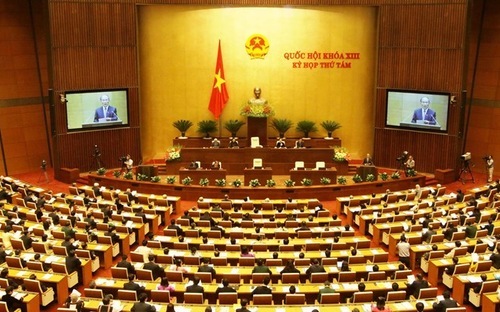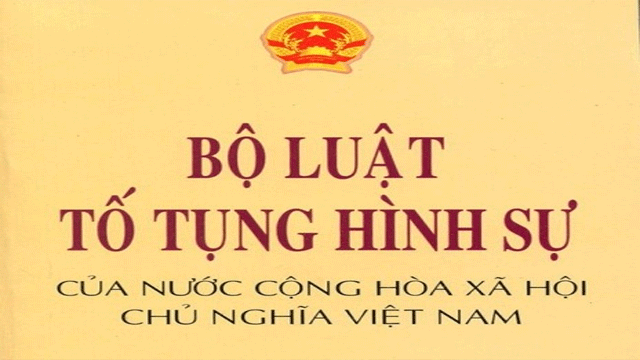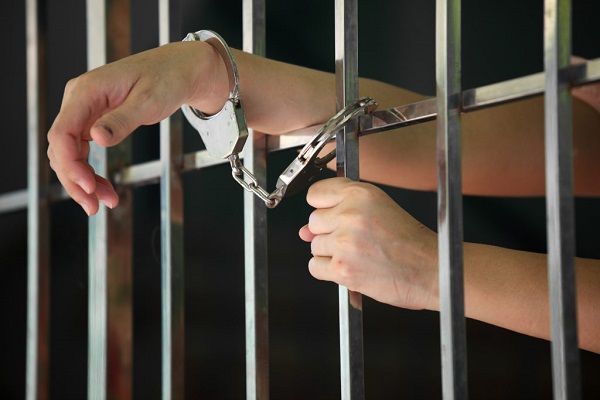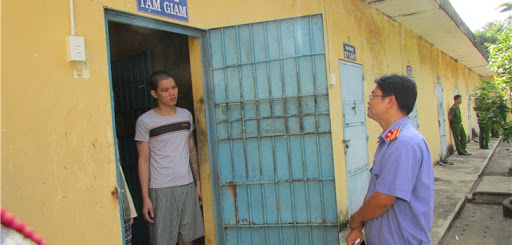On November 25, 2015, at the 10th session of the XIII National Assembly, the Law on Temporary Detention and Custody of 2015 was passed. Compared to the provisions of the Regulations on Temporary Detention and Custody, the Law on Temporary Detention and Custody has many new contents, with specific and clear provisions that resolve inadequacies and limitations; ensure the effectiveness of detention management and serve the work of investigation, prosecution, adjudication, and sentence execution; while better ensuring the legitimate rights and interests of detainees and prisoners, in compliance with the Constitution of 2013, meeting the requirements of judicial reform and administrative reform in the new situation.
Law on Temporary Detention and Custody consists of 11 chapters, 73 articles, and came into effect on January 1, 2018, with the main contents as follows:
- Clarification of the concept of detainees and persons in temporary custody compared to the regulations in the Regulation on temporary detention and custody. Previously, "A detainee is a person arrested in an emergency or caught in the act of committing a crime and has a Detention Order"; however, in reality, detainees can also be arrested in other cases such as being wanted, surrendering, or confessing.
The new law specifies that "A detainee is a person being controlled in a detention facility during the period of temporary detention or extension of temporary detention in accordance with the Criminal Procedure Code." For persons in temporary custody, there are also various formats in reality, but the old regulation did not cover all. Now, the full specification states that "A person in temporary custody is a person being controlled in a detention facility during the period of temporary custody or extension of temporary custody in accordance with the Criminal Procedure Code, including the accused; the defendant; persons sentenced to imprisonment, persons sentenced to death whose sentence has not yet taken legal effect or who are awaiting execution; persons in temporary custody for extradition purposes."

The international workshop “Sharing Experiences on the Criminal Justice System in Vietnam” organized by the Central Judicial Reform Steering Committee in cooperation with the U.S. Embassy in Hanoi, held in Hanoi on October 3-4, 2017.
The relatives of detainees and persons in temporary custody as defined in the Law on Temporary Detention and Custody are narrower in scope compared to the relatives of detainees and persons in temporary custody as defined in the Criminal Procedure Code. Relatives are allowed to visit detainees and persons in temporary custody by default; other individuals who are not relatives need the approval of the agency handling the case in order to visit detainees and persons in temporary custody.
- Specifically defining the rights and obligations of detainees and persons in temporary custody during their temporary detention or custody.
Article 9 of the Law on Temporary Detention and Custody specifically defines the most basic rights of detainees and persons in temporary custody, with additional important rights added like the right to be informed of their rights and obligations (point a, clause 1); the right to be guided, explained, and ensured the right to self-defense, legal representation, and legal aid (point dd, clause 1); the right to meet with legal representatives for civil transactions (point e, clause 1); the right to request release when the temporary detention or custody period expires (point g, clause 1).
The rights and obligations of detainees and persons in temporary custody as defined in the Law on Temporary Detention and Custody differ from those of persons serving imprisonment sentences, for instance: persons serving imprisonment must work and study, while detainees and persons in temporary custody do not have these obligations. Detainees and persons in temporary custody retain voting rights, while persons serving imprisonment do not.
Article 19 specifically outlines the rights of detainees and persons in temporary custody that are restricted during their detention or custody, including movement, transactions, contact, information, communication, and religious propaganda restrictions. Necessary civil transactions must be conducted through legal representatives and with the approval of the agency handling the case.
Article 22 specifies that detainees are allowed to meet relatives once during the detention period and once during each extension of detention. Persons in temporary custody can meet relatives once per month; such visits are decided by the head of the detention facility. The meeting of legal counsel is carried out according to the criminal procedural laws.
During the detention or custody period, detainees and persons in temporary custody can wear their own clothes and are not required to wear uniforms. If they do not bring clothes, the detention facility must provide them for use.
-
Regarding the process of receiving detainees and persons in temporary custody (Article 16) and their management files (Article 17). The law provides more detailed regulations compared to previous legal documents, seen as a significant improvement, facilitating law enforcement and file management at detention facilities, while also aiding supervisory agencies like the People's Procuracy in inspecting and supervising records.
-
The law assigns a specific chapter (Chapter V) on policies for managing detainees and persons in temporary custody under 18 years old, pregnant women, or those accompanying children under 36 months, including their right to healthcare. The law details the conditions of detention, policies on accommodation, management, living conditions, healthcare, and visits for these groups. Minors in temporary custody receive increased food allowances with added meat and fish; they also enjoy healthcare policies, disease prevention, and receive medical treatment from the detention facility’s medical unit or from medicines sent by relatives. The law also specifies the management classification for LGBT and transgender individuals.
-
Regarding the organizational structure, duties, and powers of the management and enforcement agencies of temporary detention and custody.
The law provides more specific regulations on the organizational structure of management agencies, enforcement agencies of temporary detention, and custody with investigative agencies. The system of management and enforcement agencies for temporary detention and custody is relatively separated from investigative agencies, especially within the People's Police, to ensure the independence of management, enforcement of temporary detention, and custody from investigative activities to prevent coercion and torture. The law clarifies the roles and responsibilities of agencies, organizations, and individuals in managing and enforcing temporary detention and custody. It particularly emphasizes the accountability of the People's Procuracy in supervising legal compliance by agencies and individuals, and the People's Procuracy's authority in resolving complaints concerning management and enforcement of temporary detention and custody. There are 02 articles detailing the duties, powers, and responsibilities in implementing the requests, recommendations, protests, and decisions of the People's Procuracy in managing and enforcing temporary detention and custody. Specifically, the law clearly outlines the time limits for responding, notifying, and informing the People's Procuracy of management and enforcement decisions, such as providing records, notifying detention status, law violations (15 days); self-checks and notifying results to the People's Procuracy (30 days); resolving protests under point dd, clause 2, Article 42 of the Law within 15 days from the receipt of the protest; responding to recommendations under point dd, clause 2, Article 42 of the Law within 30 days from the receipt of the recommendation. This facilitates the management and enforcement agencies in knowing specific timelines for directions, ensuring prompt compliance with legal regulations.
-
Strict regulations to ensure the right to lodge complaints and denunciations by detainees and persons in temporary custody. The law includes 18 articles concerning complaints and denunciations, showing a focus on human rights, especially for those in custody. Compared to previous regulations, the new law specifically defines the statute of limitations for complaints and denunciations, jurisdiction, resolution deadlines, records, and procedures.
-
The disciplinary regulations for detainees and persons in temporary custody have several new points compared to previous regulations. Specifically, the previous regulation did not prescribe disciplinary measures for detainees violating internal rules, but the new law includes provisions for such cases. The previous regulation allowed shackling one leg of those disciplined in solitary confinement. However, the new law considers these cases more carefully, allowing one leg to be shackled only if the person in disciplinary confinement behaves destructively, attempts suicide, or self-harms. Additionally, shackling is not applied to individuals under 18, women, individuals with severe disabilities, or those aged 70 and older.
Nguyen Phuong Thao
 Article table of contents
Article table of contents













